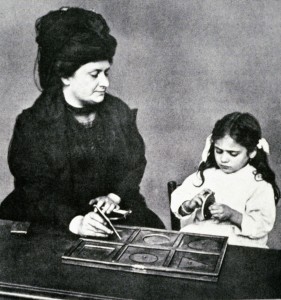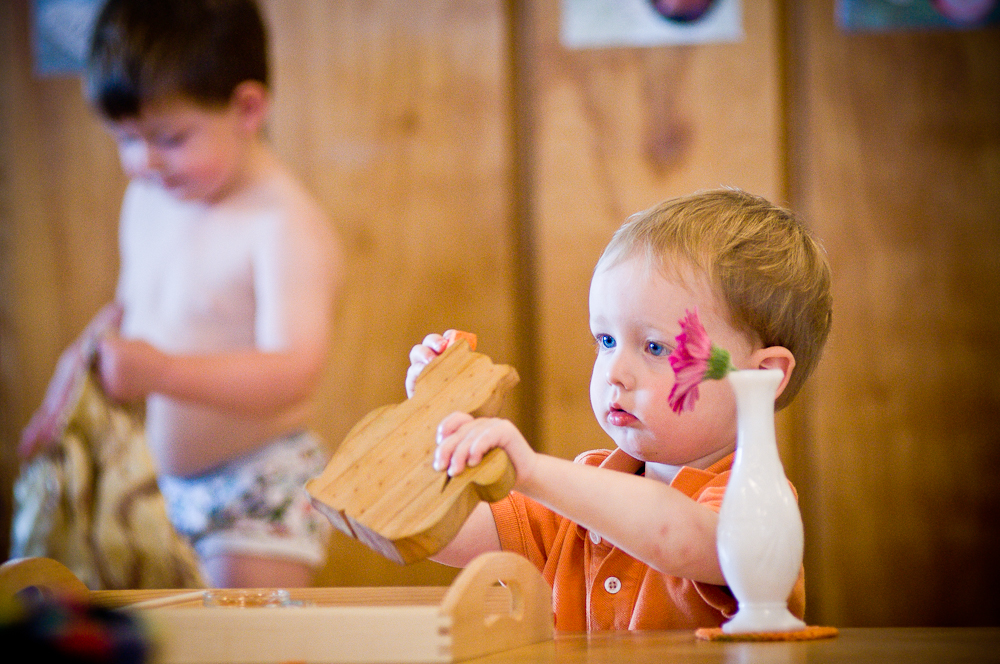One of my jobs is to meet with prospective parents after what is often their first observation in a Montessori classroom. My first question to them is simply, “What did you see?” Here are the actual quotes from observers in toddler and primary classes with whom I met this November, in response to that question:
“It was surprising to see children all engaged in different activities – shocking how quiet and content they were.”
“The children seemed happy, quiet, focused, and behaving themselves.”
“How calm things were, so well-organized and under control. Everyone was engaged in something different.”
“Children were engaged and organized and independent.”
“I was surprised how they went along quietly. The children were engaged and enjoying it; they were calm, quiet, and self-disciplined.”
“I saw self-sufficient children — nice and quiet.”
“Everyone was self-directed and engaged, calm and mellow.”
“The children were not being ‘herded’ as they would be in another preschool; instead they were moving of their own volition and at ease to learn, harmonious.”
“I was surprised to see such young children so independent and self-motivated, with such focus, such calm and quiet.”
“I noticed the way each child had his/her own activity, but without an adult telling them what to do or standing over them.”
“It seemed like such a natural environment for children.”
Perhaps you remember your first observation in a Montessori classroom. Perhaps you had a similar reaction. Most parents are taken completely by surprise, “shocked” as one parent put it, to see children this young so focused and engaged, so calm and quiet, so independent and self-directed, so happy and content. And, indeed, Doctor Montessori was herself surprised and amazed in the very same way, in that first Casa Dei Bambini in Rome in 1907.
Until that time, she had worked with children who we would think today of as developmentally challenged and impaired. She had developed certain materials and activities to use with these children, always one-on-one, often placing her hands on theirs to help them manipulate the materials and use them successfully.
At first, she conducted her work with normal children of three and four years of age in much the same way. When she was finished working with a child, she would put the experimental materials away in a locked cabinet.

But, one day, two things happened that changed her entire outlook: her assistant had forgotten to lock the cabinet the evening before and was late for work that morning. By the time she and Dr. Montessori arrived, the children had already removed materials from the cabinets on their own, and were happily and peacefully at work, each with the material of his/her own choice.
She noticed that these children focused and concentrated for surprisingly long periods of time, that they explored variations in the use of these materials spontaneously and creatively, and that they repeated the activity over and over until they satisfied something within themselves. And when they were done and had returned the activity to the cabinet, a sense of joy and calm and satisfaction seemed to settle upon them. She realized at once that the real learning took place, not during the lesson as with the developmentally challenged children, but later when children chose activities on their own and worked to their own satisfaction.
She was so surprised by this that she declared that she had discovered the hitherto unknown “secret of childhood” and called these her “miracle children” for they had shown her the way to unlock this surprising hidden potential within young children. And so, when parents observe in our classrooms today and are “surprised” and “shocked” at how focused and engaged, calm and quiet, independent and self-directed, happy and content the children are, it re-confirms the results of that original experiment. Montessori works and we are indeed doing something very right. “The proof is in the pudding,” as they say. I hope that, when you come in to observe in our classrooms, you will open your eyes and appreciate these children for the miracles they are, just as Maria Montessori did on that day of epiphany in 1907, and see that the observable and predictable outcomes that you want are right there before your eyes.
